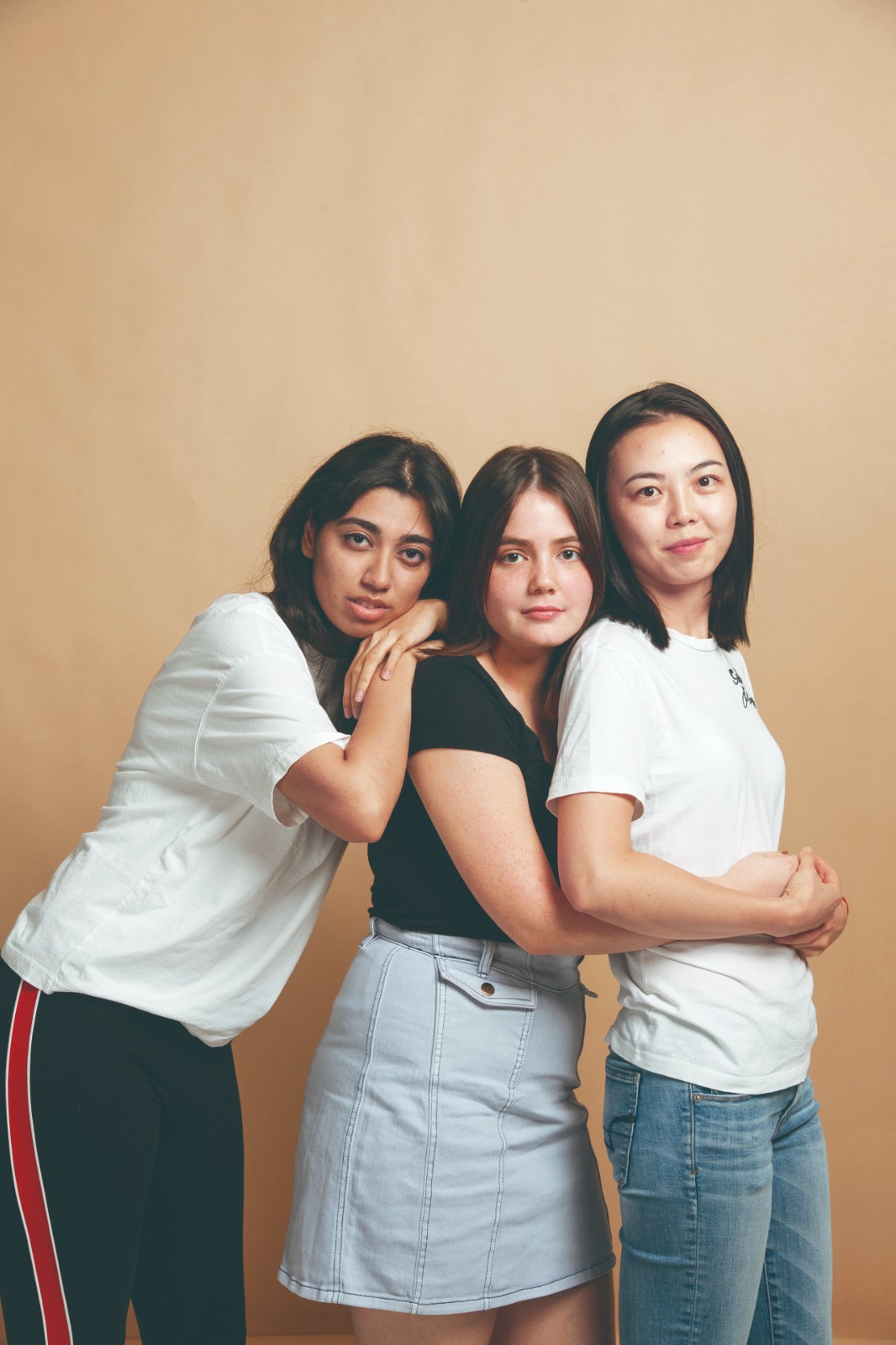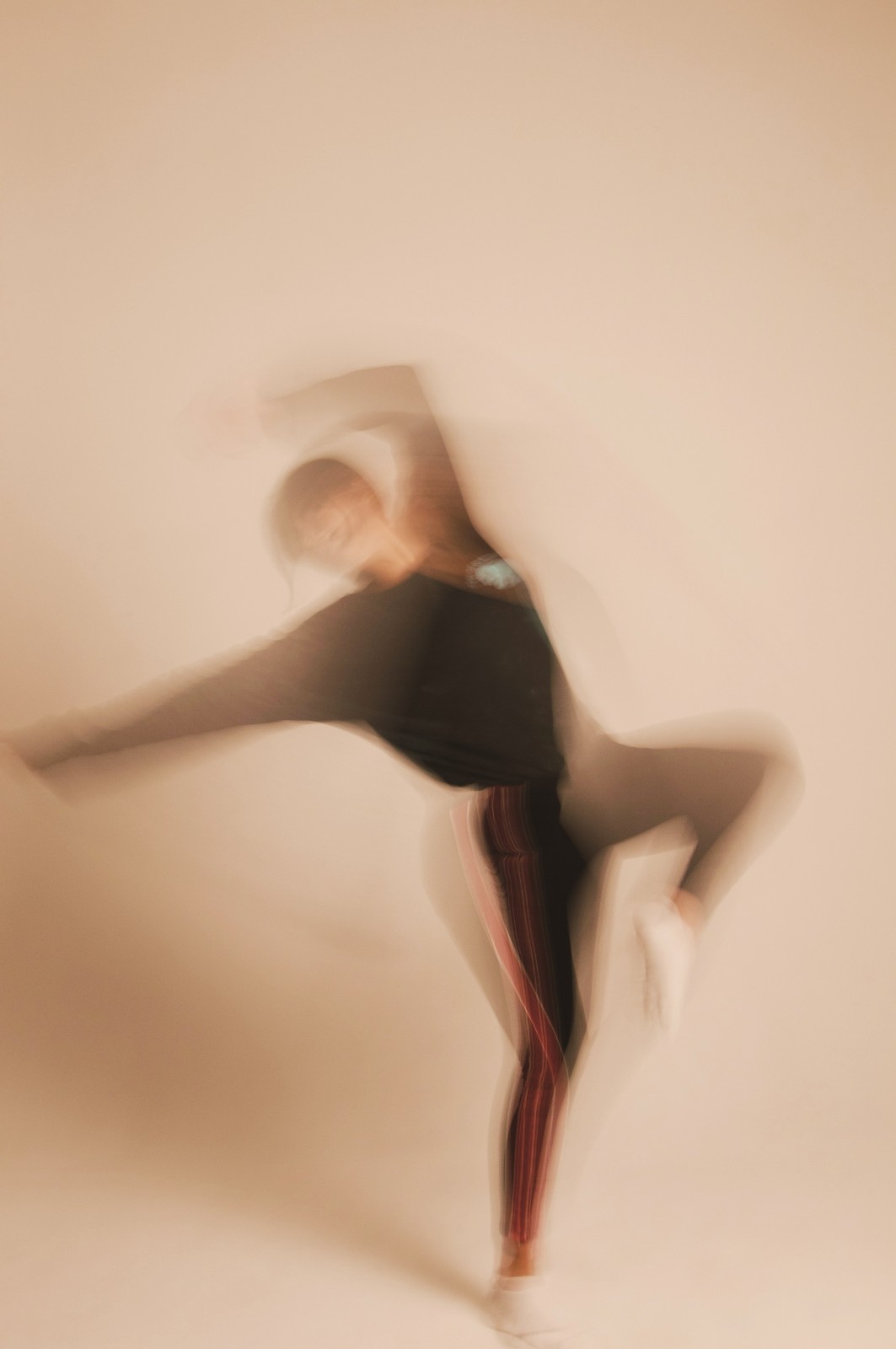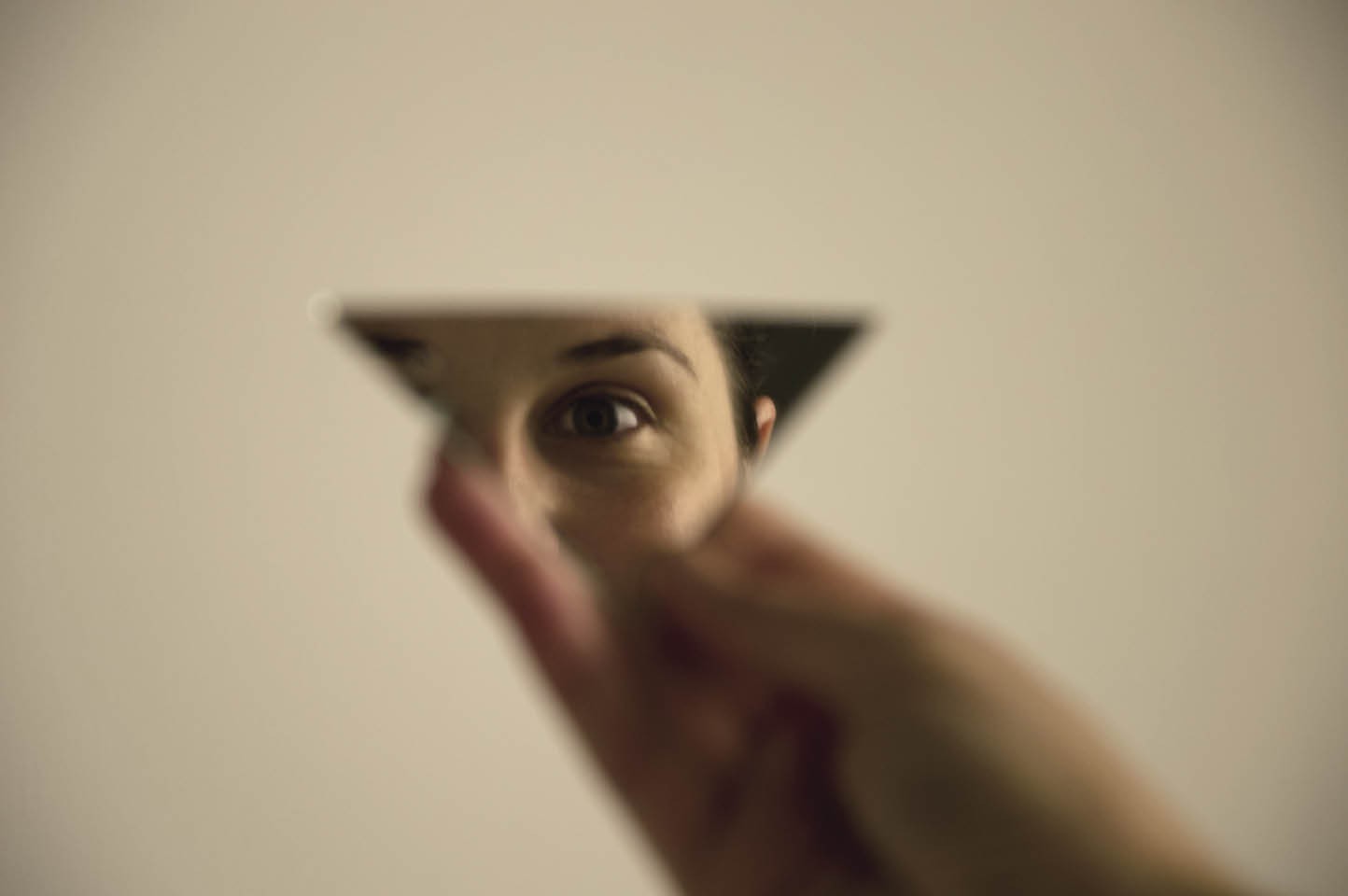
"Remember to breathe in!”, my friend’s voice echoes through my head right before we pose for a picture. It was as if she was programmed to announce it every time a camera was pointed in our direction. But it felt as if I was doing it for my 500 instagram followers, rather than to capture a moment.
My friend and I often spend our time visiting exhibitions where we take multiple photos of the same pose to capture that one ‘perfect’ shot post on Instagram.

It was a hard and fast rule: no eating before the photoshoot. It’s stupid I know, like eating noodles right before I took photos would greatly impact my weight and change my appearance. And even if it did, why was I so bothered by it?
In a time and age where social media has become the façade of our reality, we’ve all become accustomed to showing off the perfection within our lives.
And of course, visiting these exhibitions mean other artsy and beautiful people are also capturing their fabricated selves to post online. Jokingly, we would make fun of their poses but I won’t lie when I say that I sometimes felt inferior towards their appearances.
Three words I fear the most. You are fat.

Since I was a kid, it’s been drilled into my head by my mother that ‘Fat is Bad. Fat is Bad’. Anytime I would naturally put on some healthy weight, my mum would criticise my big butt or my, and I quote, ‘thunder thighs’. Naturally, I started to believe that I was ‘fat’ because I was constantly reminded of it. Fat is bad. I am fat.
I am not fat. I am tall and slim. But according to my mum and in the world where I spend most of my time, the digital one, I am not perfection. I am (the dreaded) fat. There are always better abs, more toned thighs and less cellulite.
My mum called me out for gaining weight. This meant I thought it was okay to make fun of my little sister. Whenever I got the chance, I would jokingly incorporate her weight into our conversations. Of course, we would all laugh it off, but when did it become okay for me to fat shame my sister for my amusement. At this rate, I am no better than the trolls online.

From birth, women are told to be as small as possible, and men are told to be as big as possible. If this isn’t the patriarchy, I don’t know what is. Women must be tiny, petite, little and slim. Things have changed since the 90s and 00s. Kate Moss’s ‘heroin chic’ is no longer the desired look, it’s all about being ‘strong’ (read, incredibly toned without an inch of fat) and still having incredible curves. We all want abs, a booty you crack nuts with, and big, perky boobs that sit under our chins with no bra on.
A big difference between now and the 90s is media. The media used to tell people size zero was the best size, emaciated models on catwalks eating nothing but toilet roll told people how to look and Vogue perpetuated this. But now, media isn’t constrained to the glossy pages of a magazine, or movies and TV shows. It’s everywhere, in the form of social media, and it’s impacting people more than ever before.

We scroll past photos of Kim Kardashian spending time with her daughter on her lawn in her skintight bodysuit resembling a toned hourglass. Yes, we all want the ‘slim thick’ figure, but let me just break it to you, it isn’t naturally possible for most of us.
Women are expected to conform to the narrow set of media created beauty standards resulting in low self-worth and are labelled ‘not beautiful’. The Kardashian effect has taken over our lives. Whether it’s reading about her 127th child or feeling inferior towards her figure. I’m not shaming Kim and her boobs, she’s stunning the way she’s built herself. But it’s ridiculous that her body has become the standard we all want to achieve. Many women have turned to plastic surgery to achieve these beauty traits. It’s either a curvy figure or a flat stomach, if you don’t have both you are not good enough.

The lines between desire and reality have been blurred, thanks to the toxic adverts put out by multiple influencers and celebrities. Kim is the dream, and with her, come her promotions for weight loss gummies and juice diets.
Studies have shown that social media influencers have greatly led to a worsened body image in young women. We all want what the media depicts, and our desires change as time passes and a new celebrity becomes the icon of beauty.
Approximately, forty percent of young women ranging from the age of 10-14 have already adopted weight-loss activities. Fifty percent of teenage girls and thirty percent of teenage boys use unhealthy weight control behaviors such as skipping meals, fasting, vaping, vomiting, and taking laxatives to control their weight.

Social media is largely to blame for the constant portrayal of the ‘ideal’ body type resulting in adolescents taking extreme measures to lose weight along with the help of photo editing apps to alter their bodies to their satisfaction. In reality, the slim physique is unattainable and potentially harmful to the majority which has led to a drastic rise in eating disorders and a toll on mental health.
While the negative influence of social media is more prominently visible on young women, men and young men aren’t immune from this battle either. The portrayal of muscular men has made exercise an addiction.
In the 90s there was a massive upswing in anorexia and bulimia. It is believed that this is very closely linked to the rise of the size 0 super model. Today, it’s Kim Kardashian with her big boobs and butt, tomorrow it might be Lobb Baboon with her big forehead and gigantic feet. Does this mean all small footed women are going to start stuffing socks into the front of their over sized shoes?

We seem to be forgetting that beauty is subjective. Being attractive must be adjusted to the lens of women being from different races and ethnicities and body types. We need to accept the fact that women have different size skeletons before you even start to think about how your muscle and fat hangs off it. My boss recently laughed at a taobao skirt that, labeled XL, would barely fit over one thigh, let alone her body and said ‘my skeleton is a size 8, let alone the rest of me.’
Several companies have become conscious of their advertorial effect on women and their self-esteem. Multinational brands such as Aerie, ASOS, Dove, and Old Navy have committed to using women with a variety of beautiful shapes, sizes, races, and ethnicities. This has helped women feel more positive about their bodies and feel that these adverts are less sexualized. A quick browse of their website reveals models who seem happier and more comfortable in their bodies, making them more relatable to women and their social circle.

A survey conducted showed that women felt inspired by body confidence and self- acceptance. They thought the portrayal of a greater diversity would reduce the pressure on mental health, self-esteem, and eating disorders among young women. Companies such as Aerie, are helping change the media landscape for the better. Their clothing appeals to a greater number of people and allows women to feel comfortable when shopping for their body size.
Although the impact social media has on body image goes beyond size and weight. In a society where beauty is defined by European features, I’ve been conscious and struggled to accept my body hair. I’ve been introduced to razors, waxing, threading, and countless other ‘dangerous’ methods just to remove hair and have suffered from cuts, nicks, and ingrown hairs which surprisingly is more acceptable than the hair on my body. As I grew older, I interacted with feminists who were pro-hair, women who shared the struggles with me, and I decided to put aside the misogyny within our kind and embrace my natural body hair. It’s ridiculous how we, as people, are expected to change parts of ourselves that occur naturally.

The perpetuation of the problematic discourse by social media and brands have been the root of our body image problems. Jameela Jamil has become a symbol of female empowerment, encouraging women and their worth. She was outraged and fed up with weight loss pop-ups on Instagram and decided to launch a campaign that focuses on the weightage of a person’s personality rather than the weightage of their appearance. The campaign focused on telling people how much they weighed in everything except kilograms. It aims to focus on our human attributes rather than the flesh on our bodies, in the hope to change the perception of people and how they view themselves. Instead of continuing to try to fit into a system where society puts us against our body, it is time to adopt a new way of thinking that places us on the pedestal we all deserve.
Here are some tips and exercises for you to elevate your self-esteem and appreciate your body.
• Acknowledge that you have a negative relationship with your body and that you want to have a positive and healthy one instead. You need to commit to accepting your body and mean it.
• Stop judging other people. When you criticize someone else’s body, you send the message that bodies are a value of a person’s worth. Quit it.
• Cleanse your social media and curate a media page that celebrates your body. Healthy consumption can have a huge positive impact on your perception of beauty.
• Get to know your body. Since the body is the physical expression of emotion, try doing exercises that you genuinely enjoy allowing your brain to associate your body with the emotions. One particularly powerful method of getting in touch with your body is a mindfulness exercise known as the body scan. Close your eyes. Slowly, breathe in and out as you focus all your attention on the top of your head. What do you feel? Does it tingle? Pain? After a few moments, move down to your face and do the same thing. Then your neck. Then your shoulders. Then slowly make your way to your feet. This is an effective way to get in tune with your body and makes it much easier to connect and love it.

• We always look at exercise as a form of weight-loss and a body-shaping tool, but that’s not all it has to offer. Exercise is a natural way to boost serotonin and reduce stress, it serves as a way to love your body, not change or fight it. I turn on loud music and just dance allowing my body to freely move to the beat.
• Each day, before I leave my house, I make it a point to look at myself in the mirror and praise myself. Positive affirmation has helped me overcome the need to criticise my body. Take a moment each morning to pinpoint the negatives to focus your positive affirmations on. For example, your ‘thunder thighs’ are now your ‘strong thighs’. If you’re struggling to love one specific part of your body, focus instead on a different part and the love and admiration for your body will grow gradually. So, what if I have dark circles under my eyes, at least my hair looks great today!

• Lastly, and most importantly, we need to fight the fear of being fat. I’m still learning and so should you. Sure, being overweight correlates to some health problems but so does stress. Yet, we don’t see people fighting stress the way they fight the idea of being fat. It’s time to call out anti-fat comments and celebrate our ‘imperfections’.
I say, we together should put aside the Snow filters, stop relying on Face Tune and embrace the curves, the blemishes, and the belly fat that makes us, us. Imagine all the time we could allocate to projects we really care about if we stopped worrying about our bodies. Think of how we could crush the patriarchy if we stopped believing women should be small and men should be big. If we can shake of the idea that our bodies should be small, then maybe we will start taking up more space, at the office, in meetings, on the street. We won’t feel the pressure to be petite and ‘lady like’ anymore.
It’s time for us all to start loving us, just the way we are.
If you are suffering from an eating disorder, or have been affected by any of the issues raised in this article seek help from a trained professional.